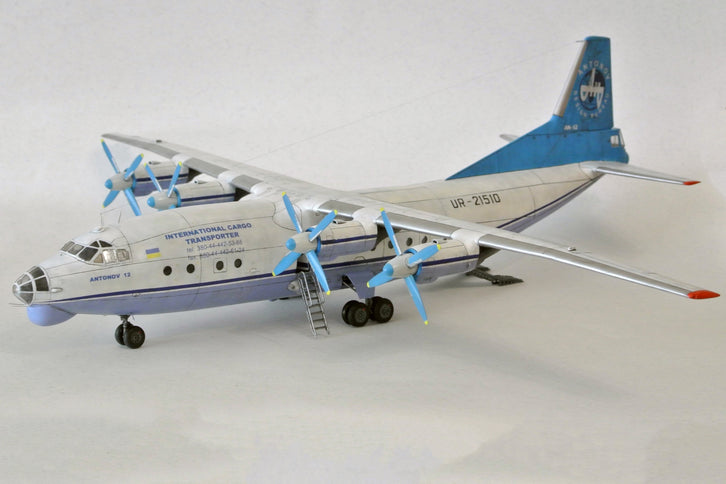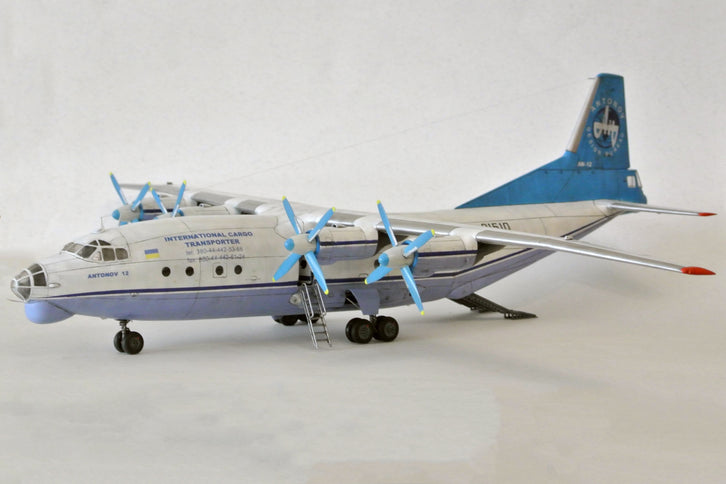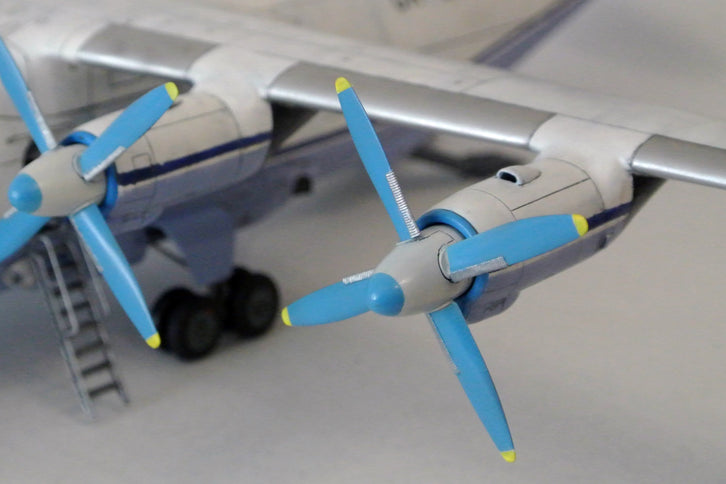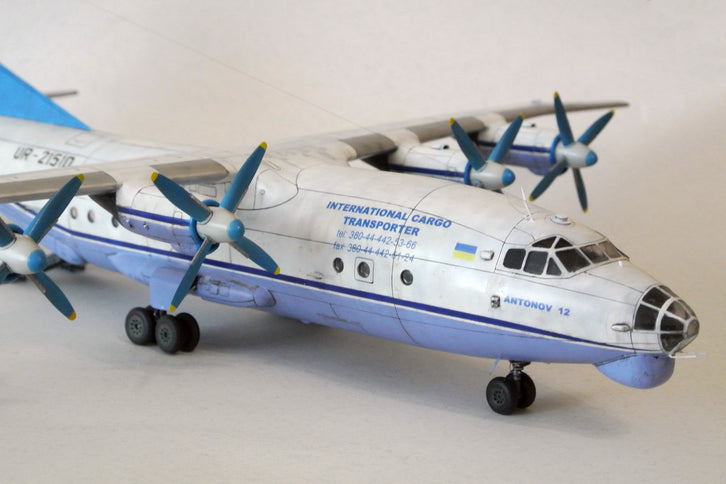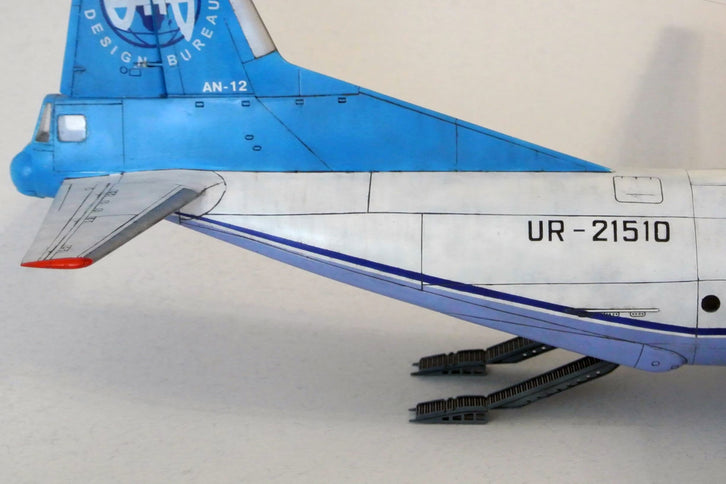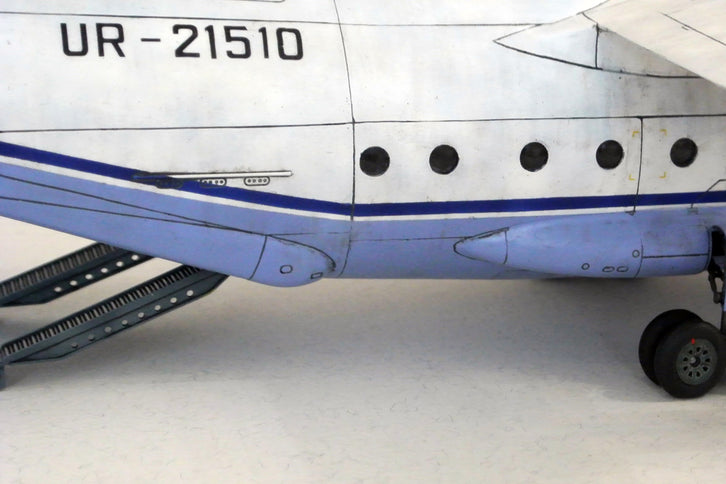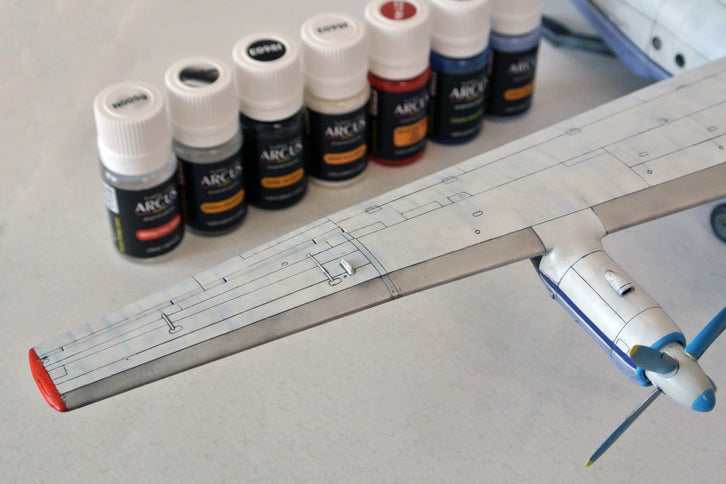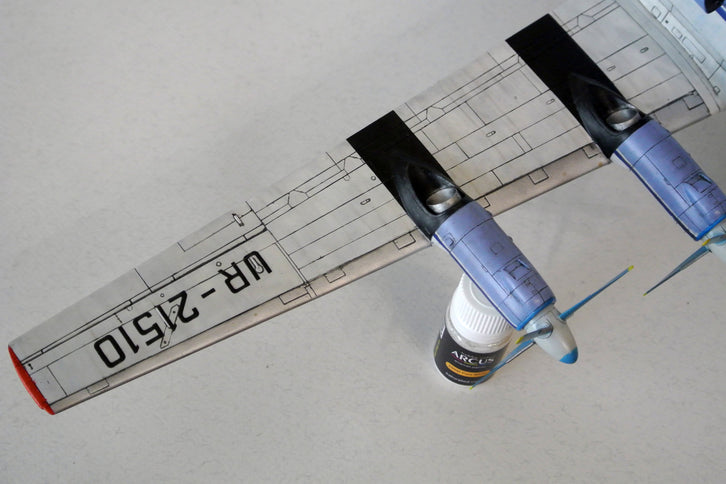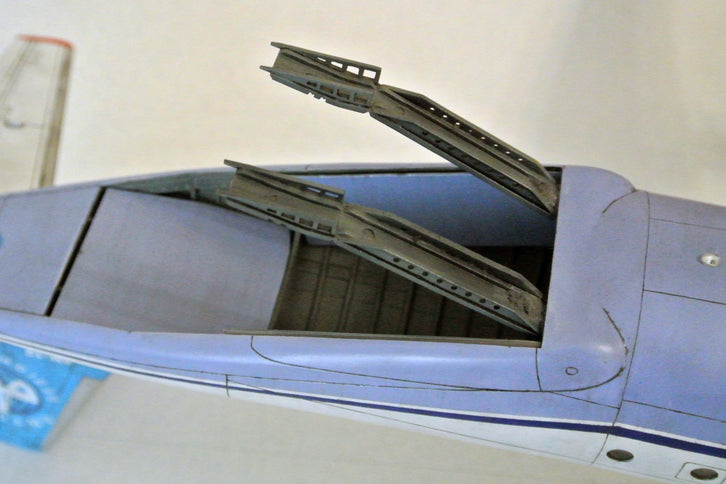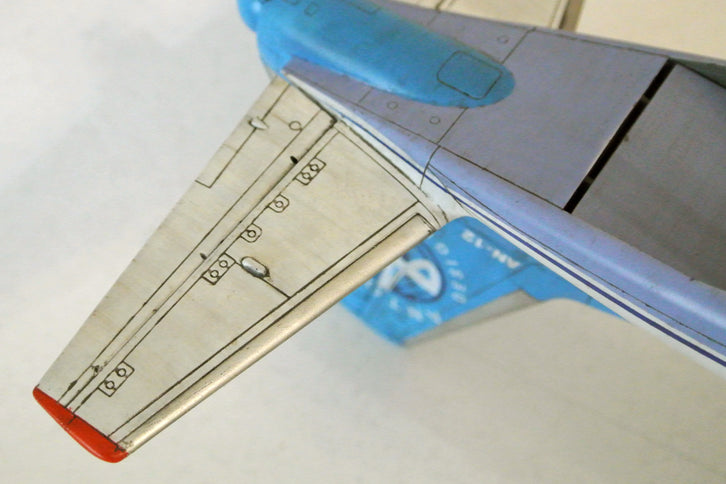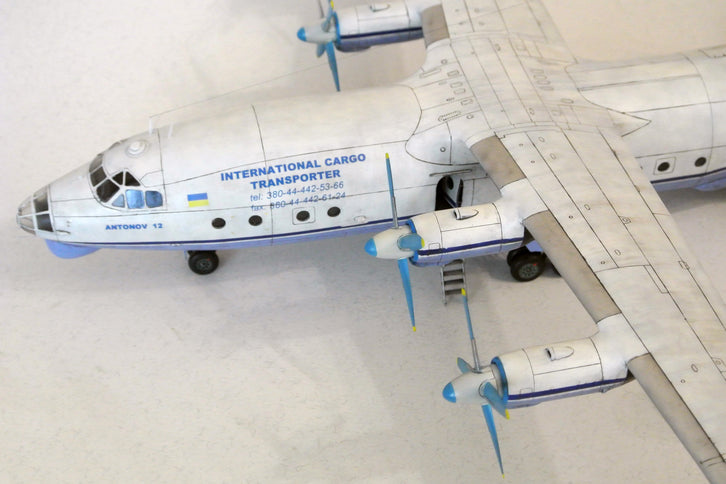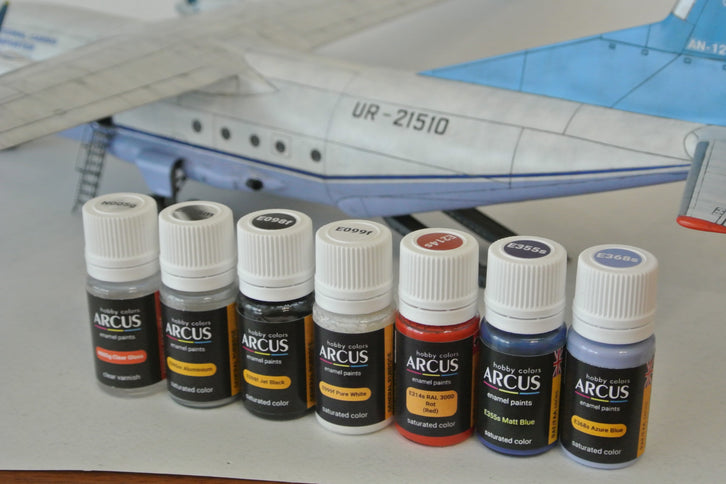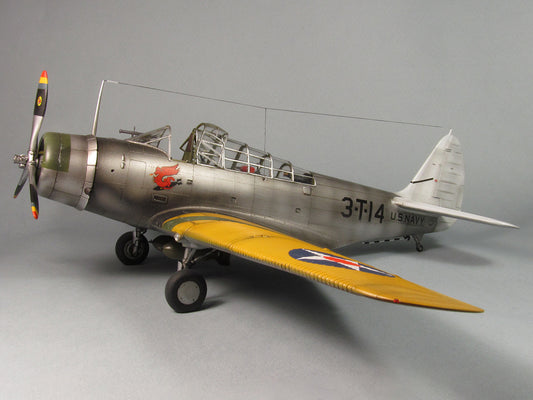By Vladimir Kuligin, Ukraine
Roden, 1/72
Building the An-12 Model - A Ukrainian Aviation Classic
For quite some time, I've harbored the desire to assemble a model of the An-12 in its civilian, commercial version—a stalwart aircraft with a rich history in Ukraine. My choice for this endeavor was a kit from Roden, complemented by photo-etching from ACE, decals from BS modelle, and the trusted Arcus Hobby Colors for that perfect finish.
About the Aircraft:
The An-12, known as "Cub" in NATO classification, emerged from the design offices of O.K. Antonov (Antonov Design Bureau). Conceived as a military transport aircraft for the Soviet Air Force, it took its inaugural flight in 1957. Over the years, the An-12 underwent numerous upgrades, resulting in 40 variations. A total of 1242 An-12s of different modifications were produced across three Soviet plants. China, under the designation Y-8, also manufactured 183 units. The An-12 stands as a high-wing monoplane of an all-metal construction, featuring a single vertical tail and retractable landing gear. Powered by four AI-20 turboprop engines, it boasts a range of 40 modifications and several specialized systems for safe flight and diverse operations.
History of An-12 UR-21510
Opting for a Ukrainian touch, I acquired decals from BS modelle, selecting the UR-21510 variant. Built in 1960, it served in the Soviet Air Force until 1989. Post the USSR dissolution, it found its way to the Antonov Design Bureau, eventually sporting the UR-21510 registration and flying with AviAnt (Antonov Airlines) until 2008. In February 2022, it was damaged in a Russian airborne attack on the Gostomel airfield, alongside the An-225 "Mriya" and other Antonov aircraft.

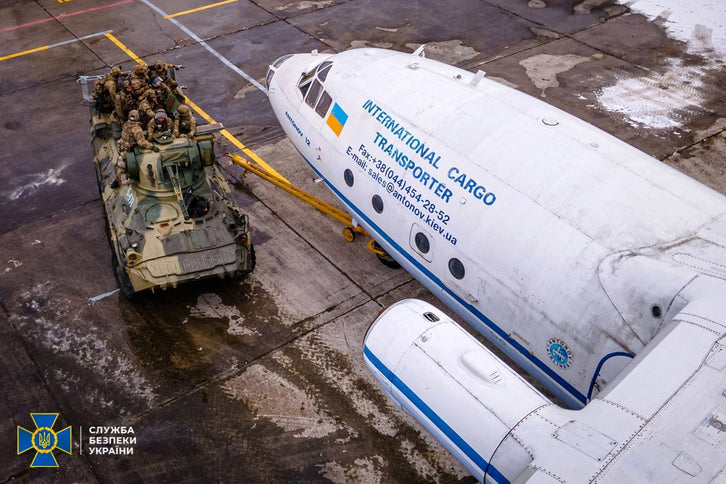
The Kit:
Roden's kit offers versatility, allowing the construction of both military and civilian versions in various modifications. The completed model boasts impressive dimensions, posing a challenge for modelers both in assembly and display, measuring 47.9 cm in length and 52.8 cm in width.

Building Antonov An-12
Commencing with the cockpit and cargo hold elements, I painted them in a dark gray shade using Dark Sea Gray from the RAF palette, as Arcus lacked the original gray for this aircraft. Subsequently, major components like wings, stabilizers, and engine nacelles were assembled. The final assembly involved the meticulous painting of smaller details.
Painting Process:
After priming, a simple black preshading was applied to enhance details. Following the standard from light to dark, I started with the primary color—white. The lower part of the aircraft featured a light blue hue with a distinct purplish tint, accurately captured using MAP Azure Blue from the British palette.
Maintaining elements of the traditional An-12 livery, the dark blue cheatline ran along the fuselage and engine nacelles, matching the blue on the decal cheatline and other elements. For the cheatline, MAP Matt Blue closely resembled the color in the decals. To simulate the blackened areas on the wing behind the engine gondolas, Jet Black was applied.
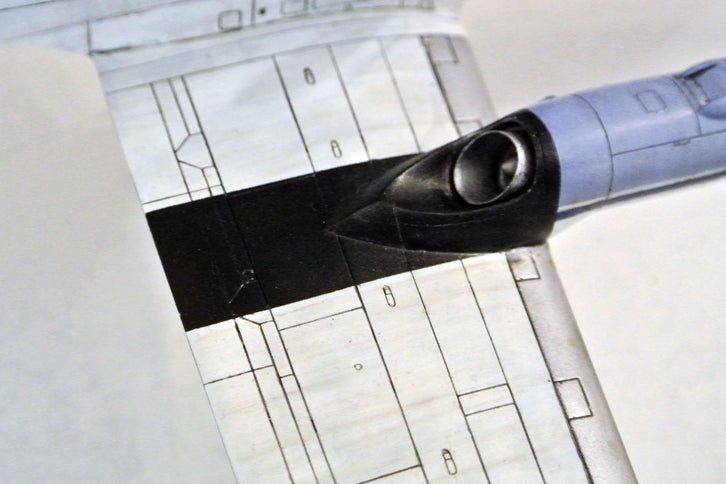
The front edges of the wings, tail, and stabilizer were of a shiny, unpainted metal. Shiny Aluminum from the Arcus palette served well for these parts. The An-12 livery featured bright red elements on wingtips, stabilizers, and the rudder, painted with German RAL 3000.
Final Touch:
After applying a glossy finish, decals were added, followed by another layer of gloss to ensure a neat appearance. A dark gray wash using RAL 7043 acrylic paint was then applied to the entire model. Excess wash was carefully removed, and the model received a final coat of semi-matte lacquer.
With the masks removed from transparent parts, tiny details attached, and the antenna thread in place, the finished model proudly took its place on my shelf.
Thanks to the folks at Arcus Hobby Colors for their fantastic paints—I've been using them for years and wholeheartedly recommend them to all my fellow modelers.
Respectfully,
Vladimir.
The Model:


